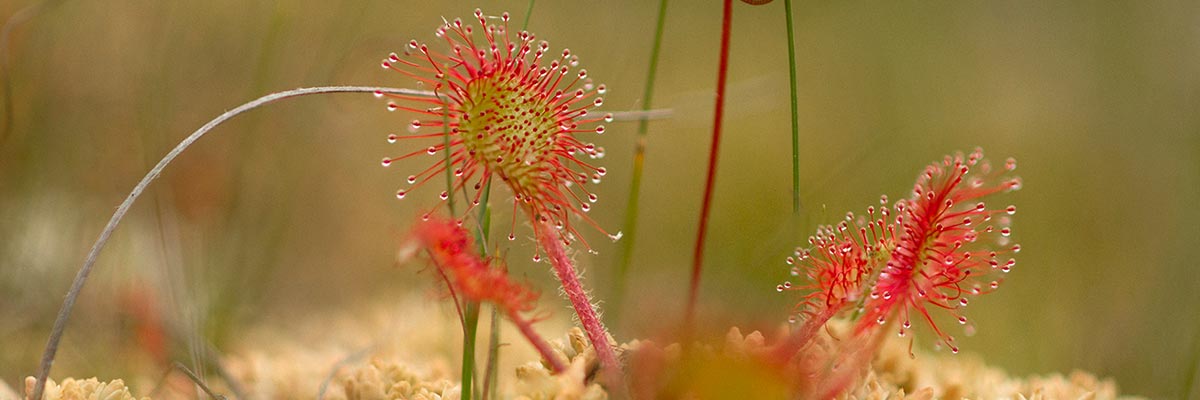Life On Sharavogue Bog
All the typical vascular plant species for the Active Raised Bog habitat such as Heather (Calluna vulgaris), Cottongrasses (Eriophorum angustifolium and E. vaginatum), Deergrass, Bog Asphodel and White Beak-sedge are common and the Midland raised bog indicator species Bog-rosemary (Andromeda polifolia) and Cranberry (Vaccinium oxycoccos) are present.
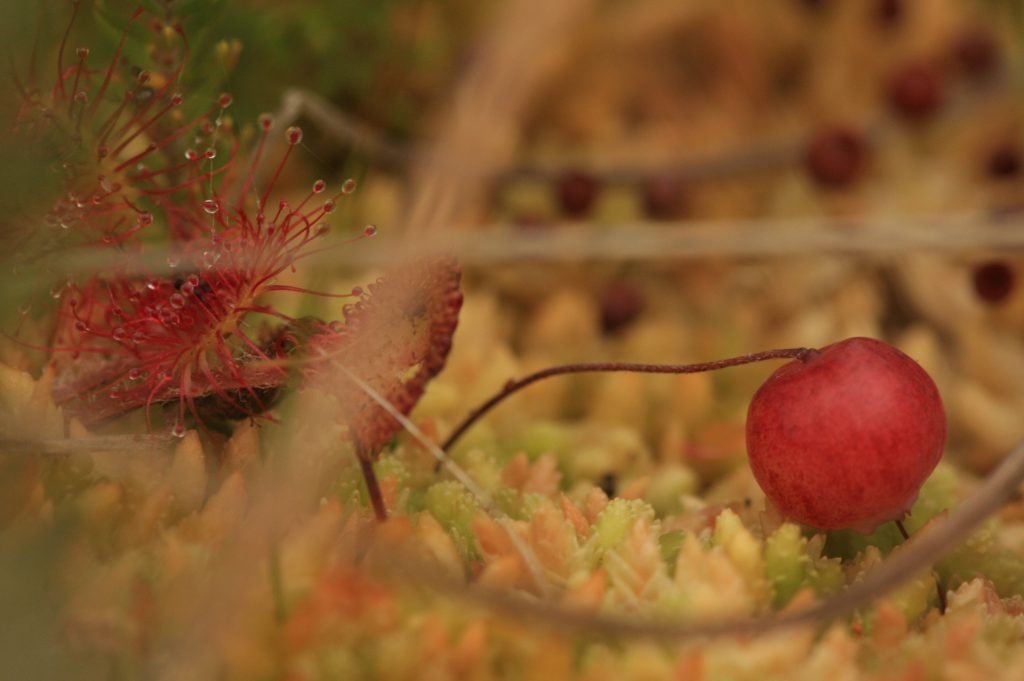
Round-leaved Sundew (Drosera rotundifolia) and Bog-Cranberry (Vaccinium oxycoccos), a Midland raised bog indicator species, are both present at Sharavogue
The dominant micro-topography consists of Sphagnum hummocks and hollows. Pools are scarce and Sphagnum cuspidatum filled lawn-like depressions are very occasional. The overall Sphagnum cover ranges from 51 to 75%. The wettest areas are characterised by the abundance of Cottongrasses (Eriophorum vaginatum and E. angustifolium). Hummocks consist of Sphagnum capillifolium, S. papillosum, S. magellanicum, S. tenellum, S. subnitens and very occasionally S. fuscum and S. austinii. Hollows may contain S. cuspidatum and/or S.tenellum.
Whilst the surface is generally quite dry, there are some small pools and lawns where Rhynchosporion vegetation is well represented. Rhynchosporion habitat is best developed in the extensive wet cutover present along the eastern margin of the high bog area. Here the dominant species are Sphagnum cuspidatum, White Beak-sedge, Common Cottongrass (Eriophorum angustifolium) and Great Sundew (Drosera anglica). The rare Brown Beak-sedge also occurs. There are a number of pools on the high bog that also support Rhynchosporion vegetation. Rhynchosporion vegetation is also well-developed in extensive wet cut-away areas which occur along the eastern margins of the high bog. Other plant species of the raised bog which are less common are Bog-rosemary, Cranberry and Round-leaved Sundew (Drosera rotundifolia).
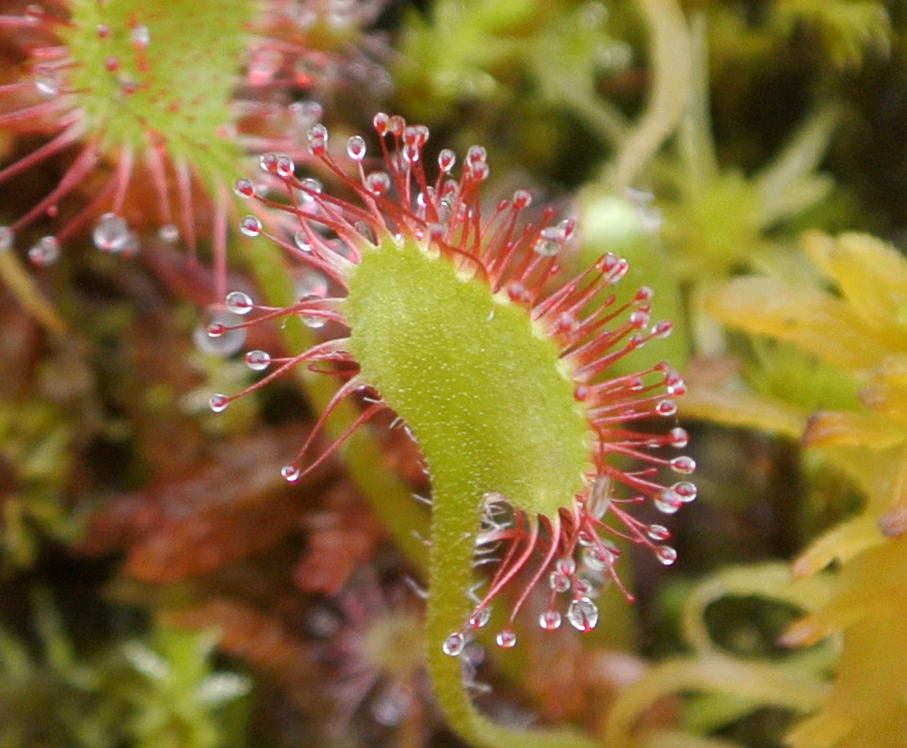
Round-leaved Sundew, aka Drosera Rotundifolia, one of Ireland’s carnivorous plants which gets its nutrients from trapped insects.
Within the cutover zone along the eastern margins of the site there is upwelling of base-rich water and these areas now support carr woodland and calcareous fen vegetation.
The vegetation of old cutover at the site is of ecological interest, particularly along the eastern margin of the bog, where a spring-fed, species-rich fen is found at the base of a limestone ridge. It is thought that this fen vegetation is a remnant of a much more extensive lagg zone, which once flanked the entire eastern side of the bog (Conaghan 1998).
This feature of a base-rich lagg area, in close proximity with the high bog, is unique in the context of Irish raised bogs (Kelly et al. 1995). The vegetation of the eastern lagg has recently been described by Conaghan (2014). The lagg can be divided into two sections, a northern zone and a southern zone. The northern area is principally cutover bog with ombroptrophic influences dominant. The surface is relatively dry in this area with some scrub encroachment (Conaghan 2014). In contrast, the southern zone has a notable minerotrophic influence with areas of Schoenus nigricans dominated fen vegetation typical of base rich conditions. The fen areas are associated with pools and occur in a mosaic of woodland, scrub, and cutover bog. Between and amid the fen areas and the railway embankment to the east, is a narrow strip of alder carr. The recent survey of the eastern lagg zone has concluded that the vegetation in this area has not changed significantly during the period 1997-2013 (Conaghan 2014).
Areas of wet lagg vegetation such as this are very rare in the country and the lagg system at Sharavogue is one of the best-developed in the country. The rare semi-aquatic plant species Slender Cottongrass (Eriophorum gracile) has been recently discovered growing in fen vegetation at this site. This species is legally protected under the Flora (Protection) Order, 2015.
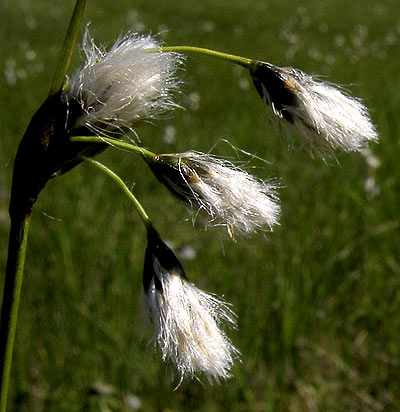
Slender Cottongrass (Eriophorum gracile) – a rare find at Sharavogue
The nationally rare shrub Alder Buckthorn (Frangula alnus), a Red Data Book species, occurs in dry bog woodland on cut-away. On the western side the site, the vegetation grades from high bog, through fringing woodland, to alluvial wet grassland by the Little Brosna River.
Fauna of Sharavogue Bog
The common frog (Rana temporaria) is known to occur. Irish hare (Lepus timidus hibernicus) was reported as common, with badger (Meles meles), fox (Vulpes vulpes), otter (Lutra lutra), pine marten (Martes martes), mink (Mustela vison), stoat (Mustela erminea) and fallow deer (Dama dama) also found in the SAC (NPWS, 2004).
Snipe (Gallinago gallinago), pheasant (Phasianus colchicus), curlew (Numenius arquata), woodcock (Scolopax rusticola), meadow pipit (Anthus pratensis), skylark (Alauda arvensis) and mallard (Anas platyrhynchos) have been reported as breeding on the bog.
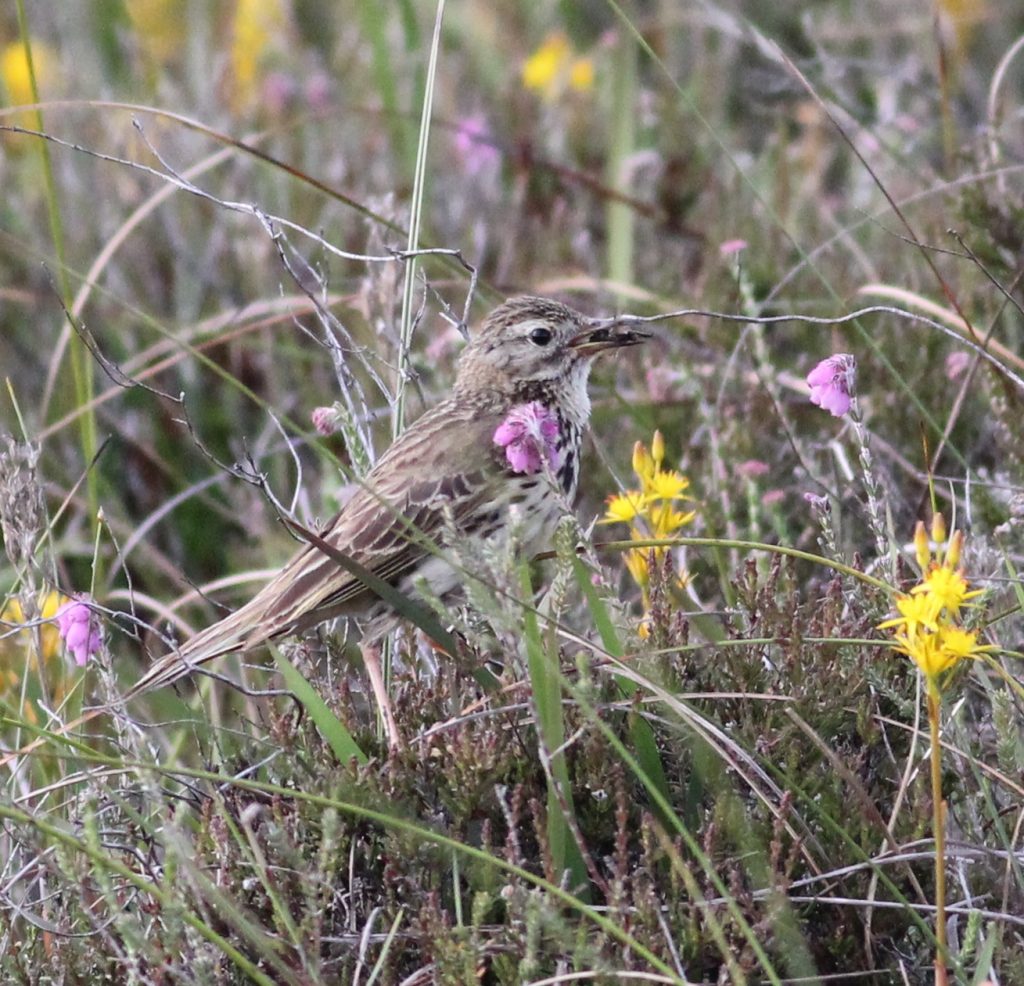
Meadow Pipit – found on most of our 12 sites, including Sharavogue (pic: Therese Kelly)
Other birds that have been known to frequent the SAC include sparrowhawk (Accipiter nisus), kestrel (Falco tinnunculus), teal (Anas crecca), long-eared owl (Asio otus), barn owl (Tyto alba) and grey heron (Ardea cinerea) (NPWS 2004).
The spider fauna of Sharavogue has been subject to recent survey (Myles Nolan) who found there to be five rare species of spider on Sharavogue Bog:
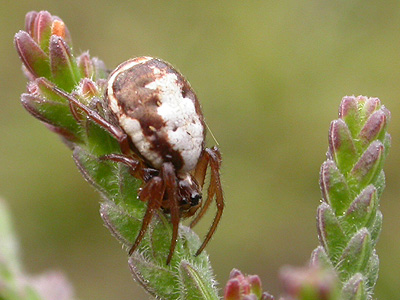
An orb-weaving Hypsosinga albovittata
Hypsosinga albovittata – This distinctively marked spider spins its orb webs low down, less than 20 cm above ground level (Jones 1983), usually on heather.
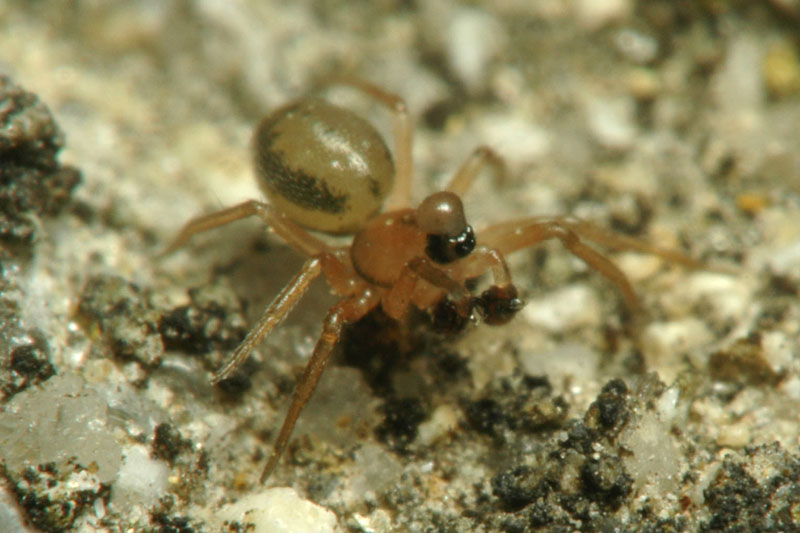
Minicia Marginella – very rare in UK and Ireland
Minicia marginella – few records in Ireland and particularly in the UK.
Satilatlas britteni – only 10 records in Ireland according to the National Biodiversity Data Centre.
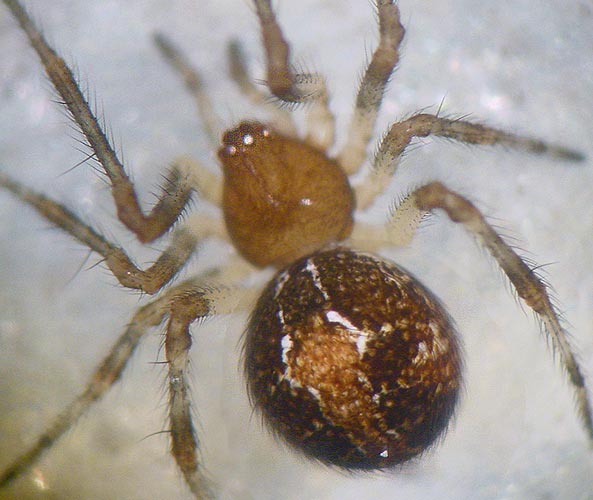
Simitidion Simile – a comb-footed cob-weaver
Simitidion Simile – quite rare
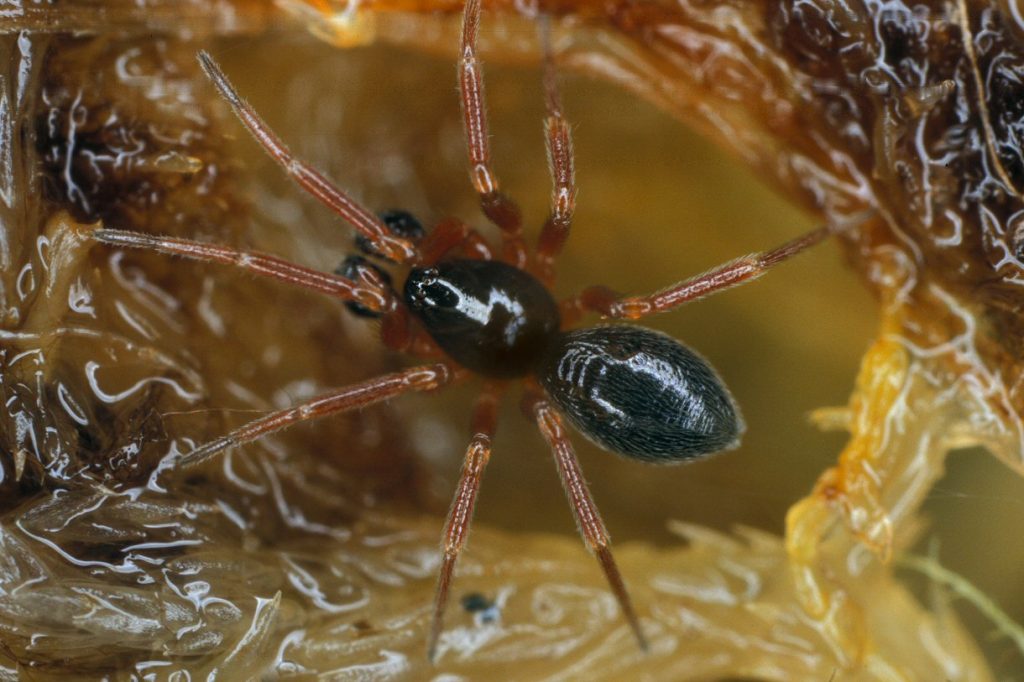
The Walckenaeria Alticeps loves Sphagnum
Walckenaeria alticeps – very rare member of the family Linyphiidae who loves bogs and Sphagnum in particular.
Moorkens (1998) reported on the mollusc fauna of the SAC, report to follow.
